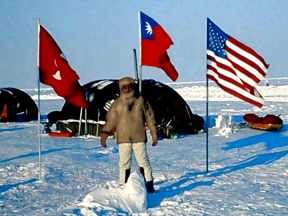 |
|
|
List, Books and Videos of North Pole & South Pole Famous Explorers and Early Explorers.

The complete list of early famous explorers from early explorers to the modern day polar globe explorer.
|
Many of the people that you find on
these expeditions are just the modern day globe explorer. While many of these
people are modern day globe explorers. You can find other north pole pages by using these search
words: north pole, north pole tours, polar, arctic, arctic exploration,
north pole expeditions, polar expeditions. Or just click on this link for
North Pole Tours.
At this link, you too can become a real globe explorer also.
North Pole Expedition 2001. * North Pole Expedition 2002. * North Pole Expedition 2003. * North Pole Expedition 2005.
|
| Jet Fighters | WWII Fighters | WW1 Planes | Ships | Spacecraft | Tanks | You too can go to the North Pole.
from the people listed on this page, going to the North Pole is just an adventure vacation. In Mid April, the temperatures are between -10 and -35 degrees F. This is equivalent to an Illinois Winter. Click here for more information on North Pole and Arctic Travel Click Here to go to the Yellow Airplane Online Museum Home Page.
Read about the 2001 North Pole Expedition Read about the 2002 North Pole Expedition Read about the 2003 North Pole Expedition Read about the 2005 North Pole Expedition Join a Future North Pole Expedition Read about the Christopher Pala Expedition to the North Pole
Click Here to go to the
Go to the Yellow Airplane Home Base 2003 North Pole Expedition Exhibit
Look at these exhibits and tell me what these men really fought for. About the Webmaster, Why God Send Me to the North Pole
/Adventures/North_Pole_Expedition_Explorers.html|58985"
|